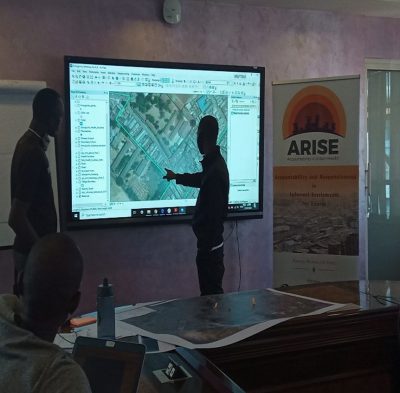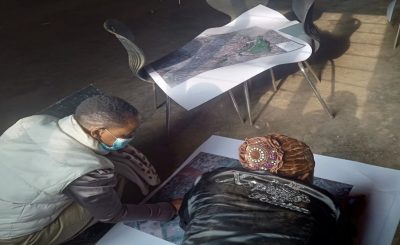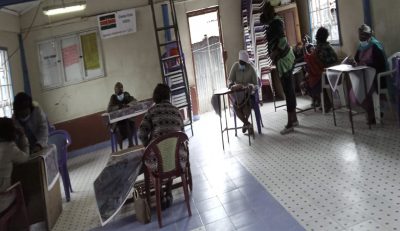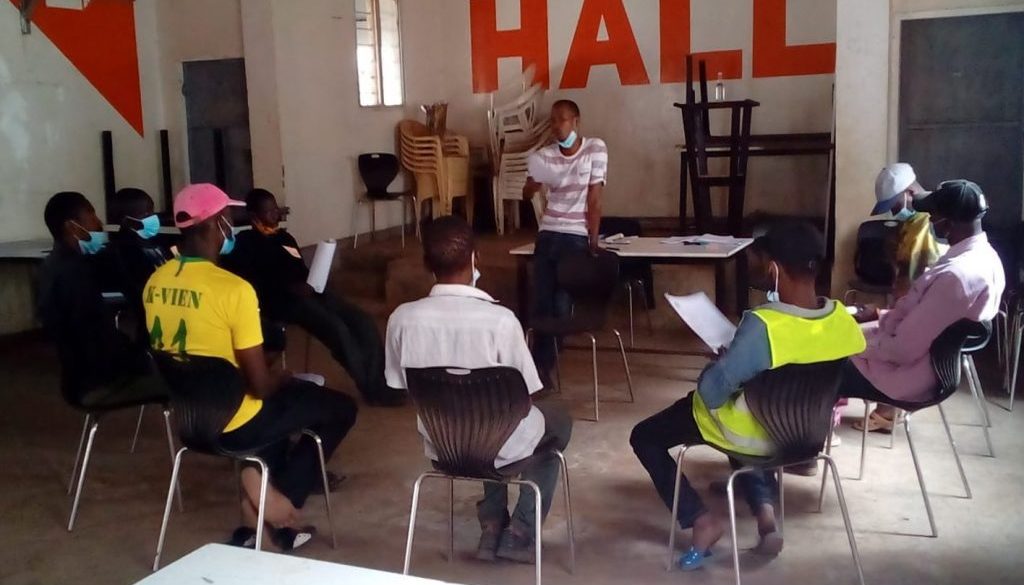Community profiling in Nairobi
Our co-researchers (John Mutinda, Lydia Akwabi, Judith Achieng, Famuel Omwaka, Daniel Obiero, and Joel Mburu) talk you through their approach to community mapping and charting social and governance terrain. They were supported by researchers (Caroline Kabaria, Ivy Chumo and Blessing Mberu).

This process began with community profiling, which involved community statutory and voluntary organisations identifying community needs, particular issues, and resources. The activity allowed us to gather knowledge of our communities, allowing us to understand the basic information of the settlement, land tenure system, historical background, basic services, and livelihoods in the study sites.
This activity involved participants representing different groups from all the villages in Korogocho and Viwandani informal settlements. We gave the study participants a printed map and asked them to identify and map basic amenities in their villages. Amenities to be mapped included; open spaces, health facilities, education facilities, water points, waste disposal sites, floodlights and other important basic services. The participants marked each of these amenities with a unique number or letter on the map and created a legend, for easier identification during analysis. After exhausting the amenities in their villages, we guided the study participants to sit in a circle while we recorded a focus group discussion (FGD). The discussions revolved around the status and governance of mapped amenities.

Our field day began with the arrangement of the hall/meeting room to ensure adherence to COVID-19 containment measures. This included adding in a sanitation station and ensuring social distance in the seating arrangement. We also displayed printed maps on spaced tables to allow for social distancing. Respondent consent was garnered upon arrival. We scheduled two groups for each day: one in the morning with female participants and another one in the afternoon with male participants.
As community members, we found this interesting because we got to learn more about our communities. We learned a lot about basic amenities, accountability, and equity of the amenities. During the focus group discussions many things emerged about the accountability of resources. Every group had different dynamics and the discussions had diverse and informative content. As co researchers we are also community members, and familiar to many respondents, which really allowed the study participants to open up and they were really receptive throughout the study.

These activities had their challenges. For example, some participants took time to understand the map and align themselves with it. In such cases, we used our understanding of the community to explain to the map to them using known landmarks to enable them to map the amenities as accurately as possible. Some participants did not understand certain questions during FGDs, evident by their responses. In such cases, we had to rephrase the question as many times as possible until the respondents understood. Some participants also spoke in a low tone which made it hard when taking notes and we had to ask respondents to project their voice.
Some participants complained about the length of the FGD sessions, but we reminded them of the importance of this activity.
We had routine debrief sessions for co-learning and  co-sharing. Researchers and the community also had trust in us as co researchers, and we were motivated and confident to give our best. We felt that the activity was of benefit to us, the community, and the researchers. Respondents had a common blanket of recommendations including improvement in public toilets, public primary and secondary schools, electricity, dumping sites, water, upgraded housing, public hospitals, security with street lighting, and improved police services.
co-sharing. Researchers and the community also had trust in us as co researchers, and we were motivated and confident to give our best. We felt that the activity was of benefit to us, the community, and the researchers. Respondents had a common blanket of recommendations including improvement in public toilets, public primary and secondary schools, electricity, dumping sites, water, upgraded housing, public hospitals, security with street lighting, and improved police services.
